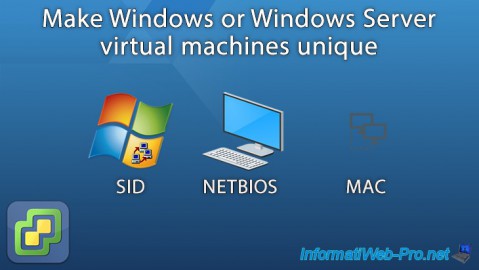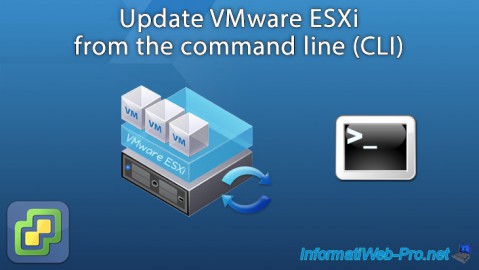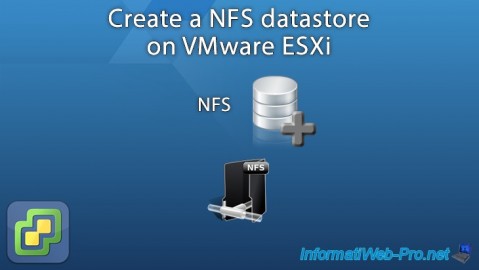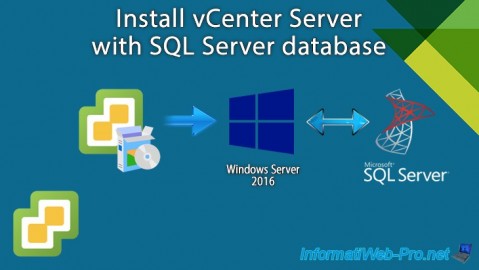- VMware
- VMware vCenter Server (VCSA), VMware vSphere
- 17 May 2024 at 07:43 UTC
-

- 1/3
On VMware vCenter Server, you can create tags and tag categories that you can then assign to the different objects in your inventory to find them more easily.
- Manage tags
- Create a tag category
- Create tags
- Assign tags
- Quickly find objects using their tags
- Restriction on assigning tags
- Create a tag category for VMware ESXi hosts
- Create tags for VMware ESXi hosts
- Assign tags to a VMware ESXi host
- Find VMware ESXi hosts by tags
- Create additional tags for VMware ESXi hosts
1. Manage tags
As you can see, you can assign tags to your virtual machines, but also to other objects.

To do this, go to the menu and click on: Tags & Custom Attributes.

In the "Tags" tab, you will be able to create tags.
Note: tags appeared with vSphere 5.5 and replace the custom attributes that were available with older versions of VMware vSphere.
From the "Custom Attributes" tab available on this page, you can also migrate your custom attributes to the new VMware vCenter Server tag system.

You can also create tag categories in the sub-tab: Categories.

2. Create a tag category
To get started, you'll need to create tag categories that allow you to group tags.

As you can see, for each category of tags, you will be able to:
- Category name: specify a name for the tag category.
- Description: enter a description for this one.
- Tags Per Object: choose if you can assign one tag or several tags from this category to the same object.
- Associable Object Types: choose to which object types future tags in this new category can be assigned.

For this tutorial, we have created a new category "GuestOS" for which we can assign a single tag from this category per object.
But, we have restricted the type of objects that can be associated with: Virtual machine.
Thus, tags in this category will only be offered for "Virtual Machine" type objects.

The "GuestOS" tag category has been created.

3. Create tags
Now that you have created a tag category, you need to create the tags you want.
To do this, in the "Tags" tab, click: New.

Provide a name and description (optional) for this new tag and select the tag category to which it should belong.
In our case, this new tag will be in our "GuestOS" tag category.

The new tag appears in the list and as you can see, it is linked to our "GuestOS" category.

For this tutorial, we will also add the guest operating systems "Windows Server" and "Linux" to our "GuestOS" tag category.


The desired tags have been added.

4. Assign tags
Now that you've created the desired tags, here's how to assign them to your various objects.
In our case, these tags will allow us to easily find our virtual machines, whose operating system is: Windows, Windows Server or a Linux distribution.
At the moment, no tags are assigned to our virtual machines.

To assign a tag to a virtual machine, select the desired virtual machine, then go to: Actions -> Tags & Custom Attributes -> Assign Tag.

Select the tag you want to assign to this object.
In the case of our "Debian 10.9 x64" virtual machine, we assign it the "Linux" tag.
Warning : when creating our "GuestOS" tag category, we selected the "One tag" value for the "Tags Per Object" option.
Which means we can only select one tag from the "GuestOS" category per object.

The selected tag will be assigned to your virtual machine.

If you attempt to assign multiple tags to the same object when you had restricted tag assignment to a single tag for the tag category concerned, then an error will occur.
In our case, this error was:
Plain Text
(vmodl.fault.InvalidArgument) {
faultCause = null,
faultMessage = null,
invalidProperty = null
}

To assign a tag to a virtual machine, you can also click on the "Assign" link at the bottom of the "Tags" block displayed on the page of each virtual machine.

Share this tutorial
To see also
-

VMware 9/23/2022
VMware ESXi 6.7 - Make virtual machines unique
-

VMware 10/5/2022
VMware ESXi 6.7 - Update VMware ESXi from the command line (CLI)
-

VMware 7/29/2022
VMware ESXi 7.0 / 6.7 - Create a NFS datastore
-

VMware 2/14/2024
VMware vSphere 6.7 - Install vCenter Server with SQL Server database


You must be logged in to post a comment